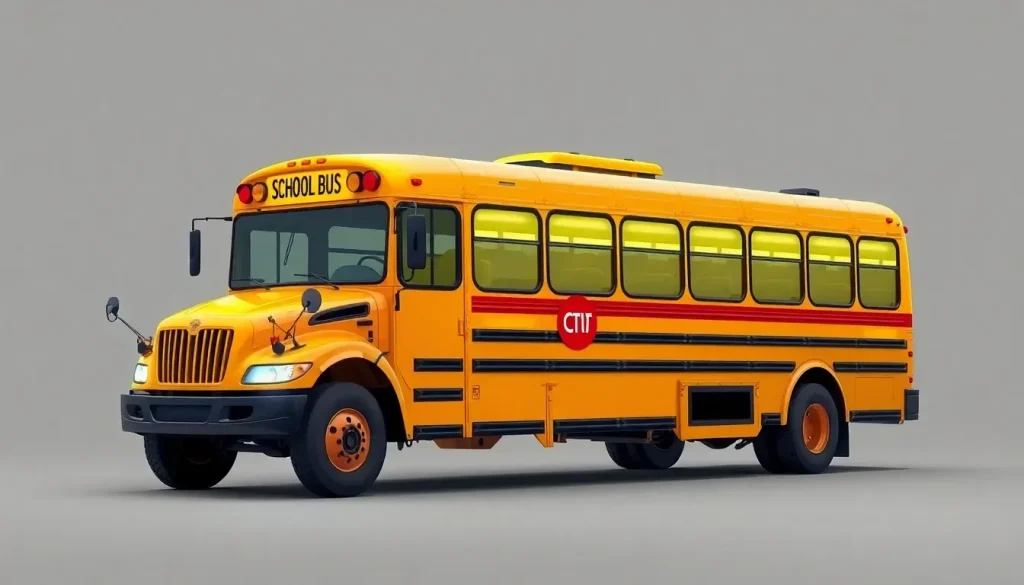Thomas Built Buses Launches Wattson, First Electric School Bus

In an era where sustainability and innovation are at the forefront of transportation, Thomas Built Buses (TBB) is making waves with its groundbreaking introduction of the Saf-T-Liner eHDX2 Wattson. This electric Type D school bus marks a significant milestone not just for the manufacturer but also for the future of school transportation. With the rise of electric vehicles, Wattson is poised to redefine how we think about school buses, combining efficiency, safety, and eco-friendliness.
As school districts worldwide transition towards electrification, Wattson stands out as a solution tailored for their evolving needs. The bus embodies years of development and customer feedback, designed to facilitate long-term fleet planning while also addressing the immediate requirements of modern education systems.
Overview of Wattson: A New Era for School Buses
The Saf-T-Liner eHDX2 Wattson is TBB's first electric Type D school bus, representing a shift in how educational institutions can approach transportation. Traditional school buses have long been associated with diesel engines, but with Wattson, TBB invites districts to embrace an electric alternative that offers numerous benefits.
Type D buses are characterized by their large flat fronts, which provide enhanced visibility for drivers and a higher seating capacity for students. This makes them an ideal choice for transporting groups safely and efficiently. With Wattson, these same benefits are now available in an electric model, paving the way for a cleaner, quieter future in school transportation.
Technical Specifications of Wattson
At the heart of the Wattson is the advanced Accelera 14Xe electric axle. This cutting-edge technology integrates the motor, gearbox, and power electronics into a single, compact unit. The result is a smoother driving experience and reduced maintenance needs, thanks to the fewer mechanical components involved.
Here are some key performance highlights of the Wattson:
- Battery capacity: 246 kWh
- Estimated range: Up to 150 miles (241 km)
- Charging capabilities:
- Standard SAE CCS1 charging
- 2–3 hours with DC fast charging (minimum 60 kW output)
- V2G-capable system
- Optional AC/DC SAE J1772 CCS1 charging with a 20 kW onboard charger
- Charging range:
- 20 kW (AC)
- 120 kW (DC)
- Power and torque: 295 peak horsepower; 750 lb-ft of torque
- Transmission: Two-speed
- Battery system: Liquid-cooled
T.J. Reed, president and CEO of Daimler Truck Specialty Vehicles, emphasized the importance of this innovation: “Wattson represents our next step in electrification. It reflects our belief that the best electric solutions are the ones that feel familiar, fit within your fleet, and are built to last.” This commitment to customer feedback ensures that Wattson meets the real-world needs of school districts.
Innovative Features of the Wattson
The design of Wattson goes beyond just its electric powertrain. With a 277-inch wheelbase, the bus can accommodate multiple configurations that include optional 69-inch pass-through luggage compartments, making it adaptable for various school activities. Additionally, the bus features an LCD instrument cluster, which provides real-time diagnostic and performance information, enhancing operational efficiency.
Charging options are a crucial aspect of electric vehicles, and Wattson does not disappoint. A rear charging port comes standard, with an optional front charging configuration available to suit different user needs. This flexibility allows schools to easily integrate Wattson into their existing infrastructure.
Supporting the Shift to Electrification
Cognizant of the challenges that come with electrification, Reed noted, “We know electrification can feel like a big step. With Wattson, we’re making that step easier by giving districts a familiar Type D solution they already trust—now in electric.” This approach aims to alleviate concerns surrounding the transition, making it accessible and practical for schools.
The availability of Wattson for order is anticipated by the end of 2025, with initial deliveries projected for late 2026. This timeline allows districts to plan ahead and integrate the bus into their fleets in a timely manner.
The Future of Electric School Transportation
As environmental regulations tighten and the push for sustainability grows, electric buses will become an increasingly vital component of school transportation. Wattson not only provides an eco-friendly alternative but also aligns with broader educational goals of promoting green initiatives. Schools adopting this technology will not only reduce their carbon footprint but also set a precedent for future generations.
Moreover, the transition to electric buses can lead to significant cost savings over time. While the initial investment may be higher, lower operational costs, reduced maintenance needs, and potential government incentives can make electric buses a financially sound choice in the long run.
Watch the Introduction of Wattson
To get a closer look at this innovative electric school bus, check out the introduction video below:
In conclusion, the introduction of the Saf-T-Liner eHDX2 Wattson highlights a significant advancement in the electric vehicle market, particularly for school transportation. TBB is not just creating buses; they are shaping the future of how students will travel to school in an environmentally responsible way.




Leave a Reply